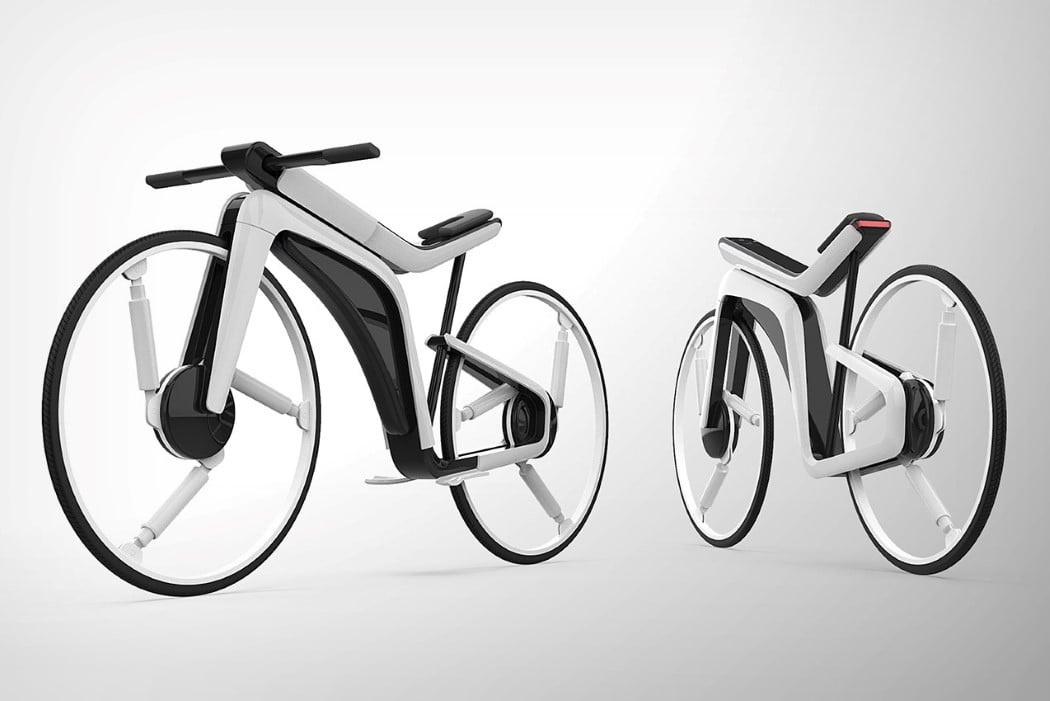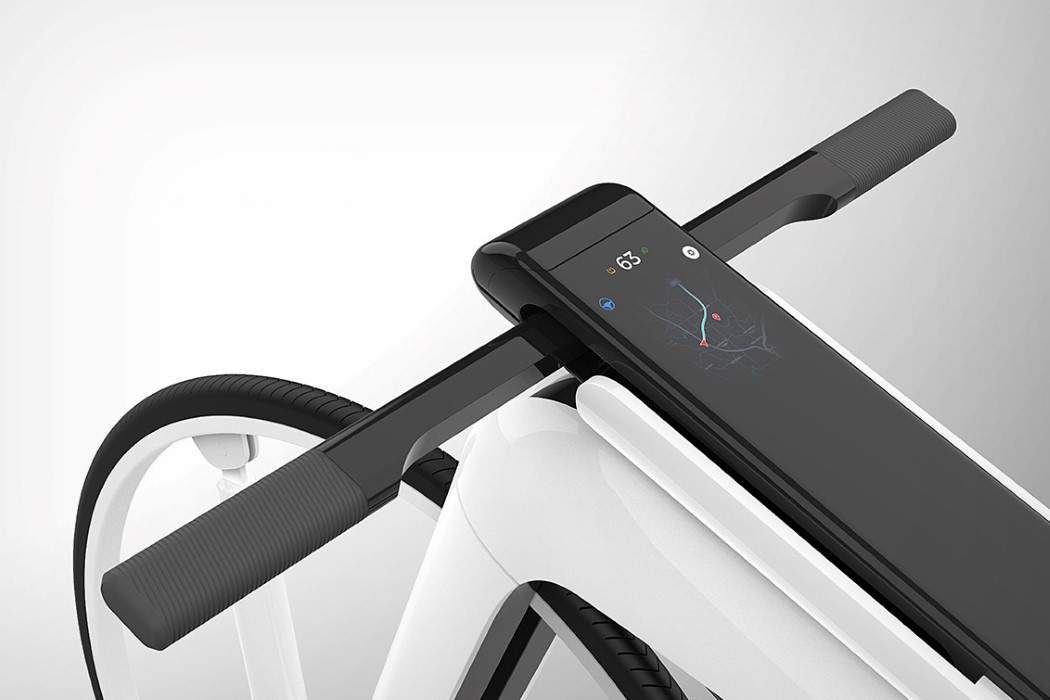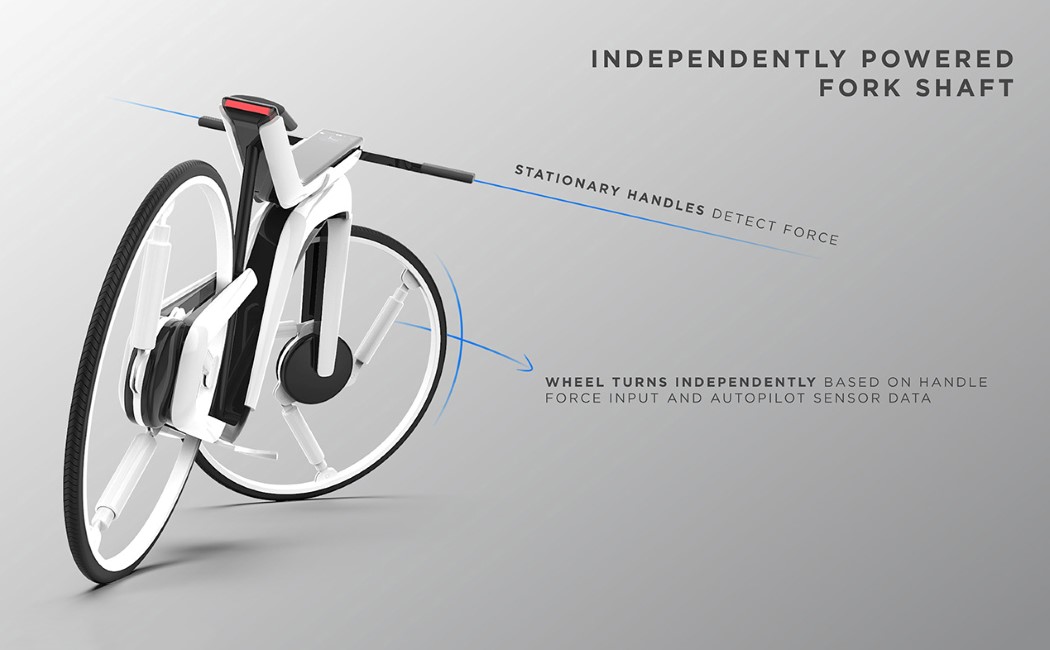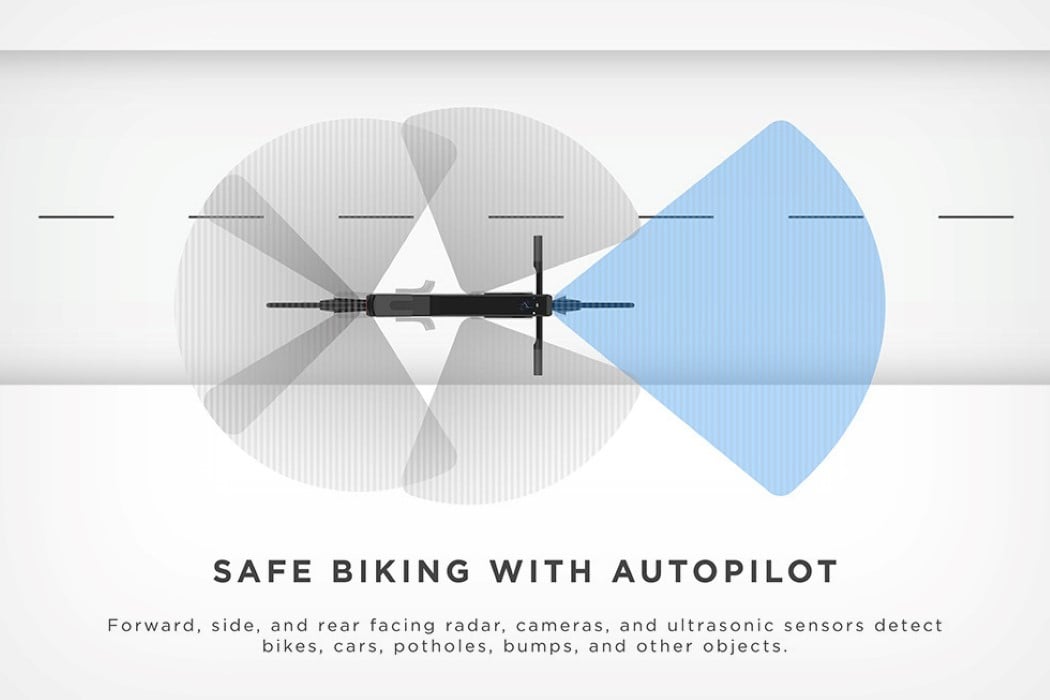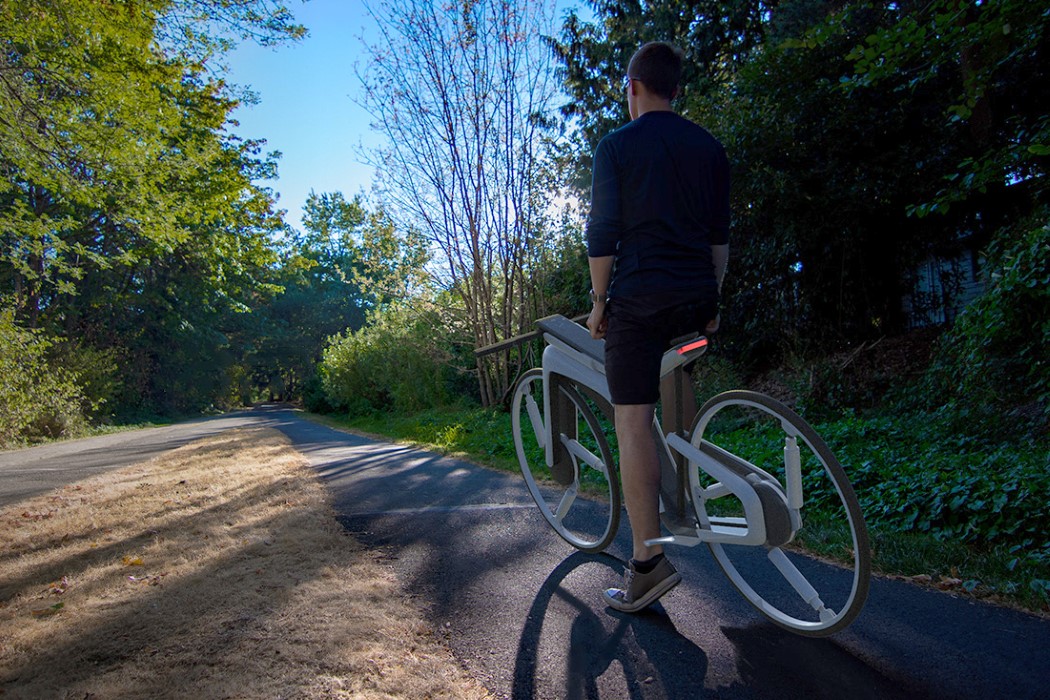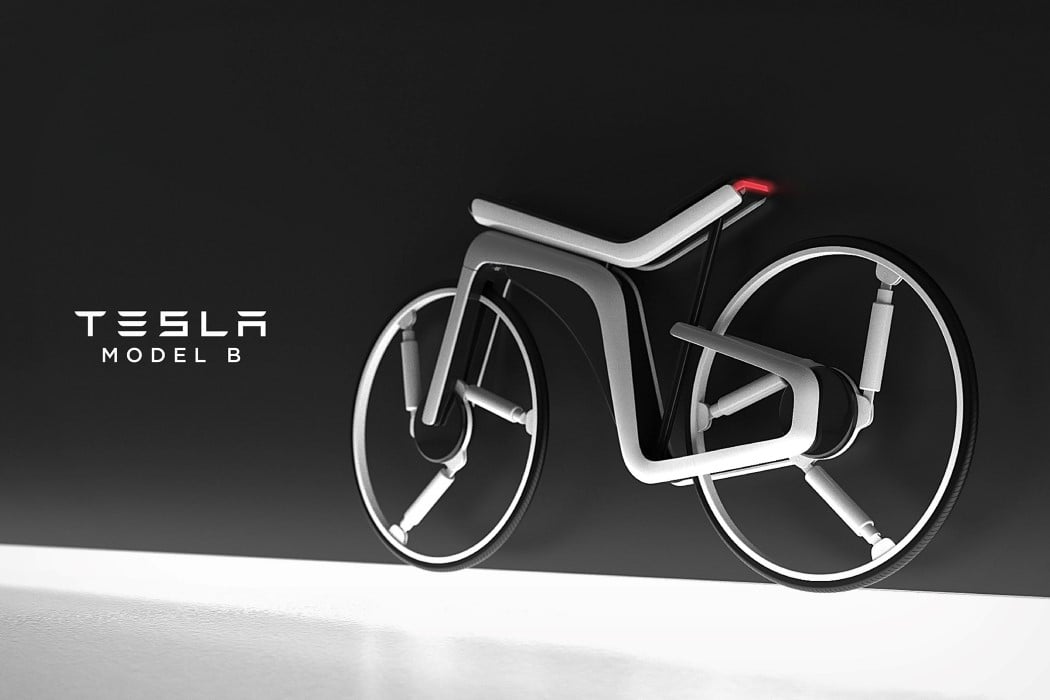
If I had to condense Tesla‘s ethos into a single phrase, it would arguably be to bring advanced technologies to the world of automotives to make transportation efficient, safe, and convenient. Whether it’s the electric powertrains, the efficient batteries, the advanced hardware/software, or the fact that Tesla is spearheading the self-driving movement, it’s safe to say that the company has gone above and beyond to change the face of how we get from A to B. In that very vein, the Tesla Model B concept by Kendall Toerner brings Tesla’s advanced approach to the category of bicycles.
The Model B forms a bridge between conventional bicycles and road-vehicles, with a design that, like cars, is designed to be safer, more efficient, and less energy-intensive. The Model B’s sleek frame comes with forward, side-facing, and rear proximity and LiDAR sensors that scan the surroundings to create a protective bubble around the rider, alerting them of any obstacle. Each wheel comes with its own dedicated motor, forming the Model B’s dual-drive system. Spokes on the wheels are replaced by shock-absorbers, helping keep your ride smooth.
The frame of the e-bike also integrates foldout footrests and handlebars. The handlebars don’t independently rotate, but rather detect force, allowing you to turn by simply applying more force on a particular side. The front-wheel turns independently, based on handle force input. The Model B also comes with its own autopilot feature that lets the bike’s own AI take over, using the multiple sensors on its frame as its eyes to maneuver the bicycle safely. A slick dashboard sits flush within the bike’s frame, allowing you to see bike stats as well as set navigation for your own reference, or for the Tesla autopilot. The Model B sports a stormtrooper color combo of white with black accents, although I’d love to see one with a nice hot red paint job!
Designer: Kendall Toerner
